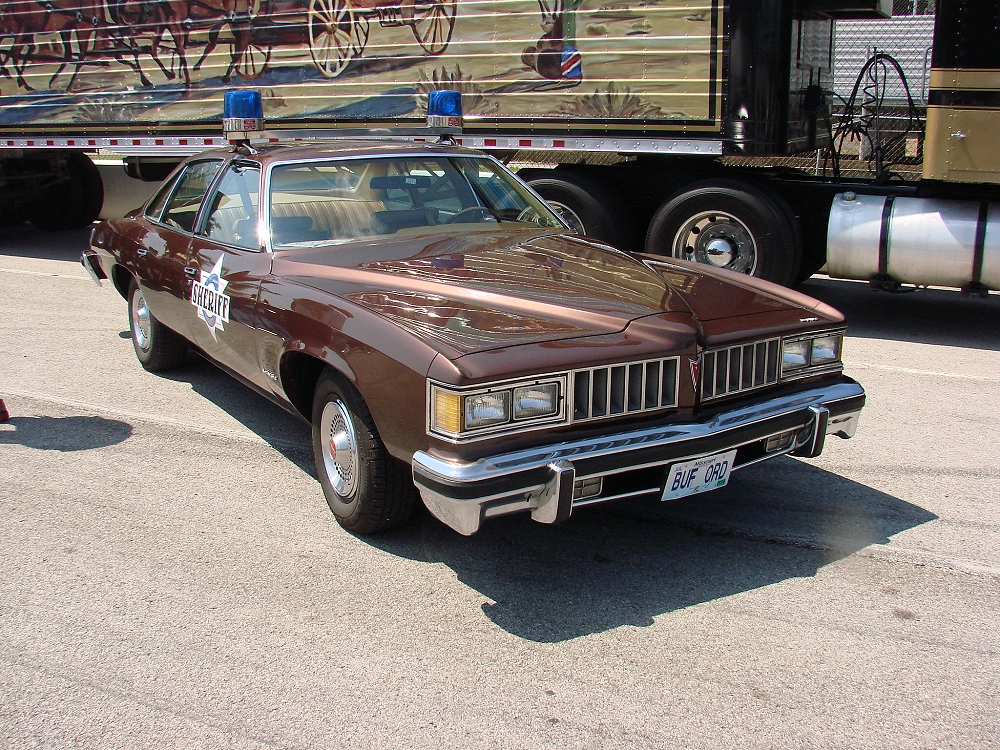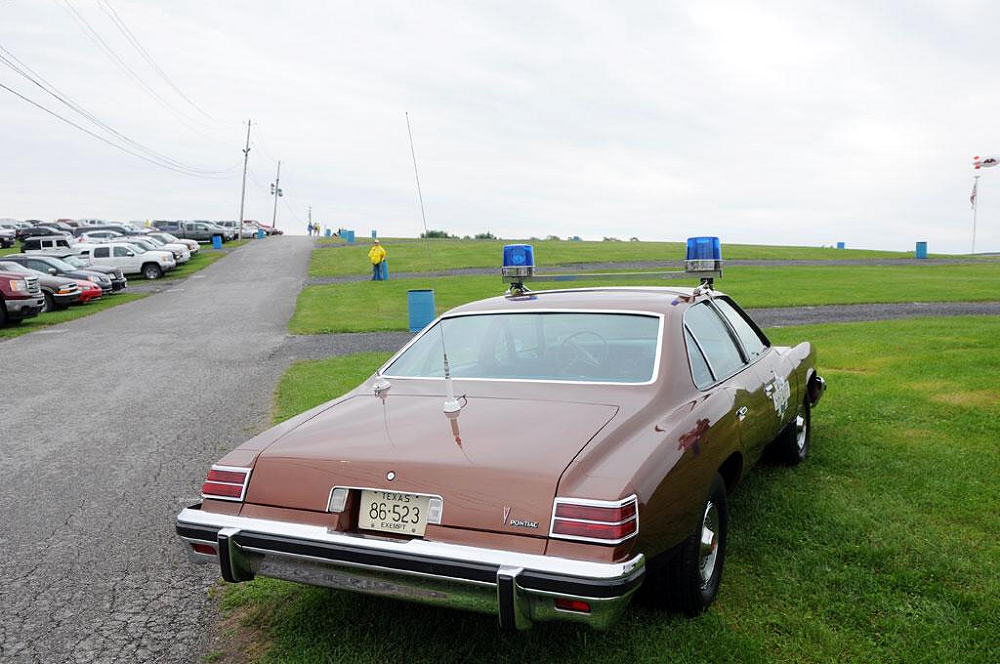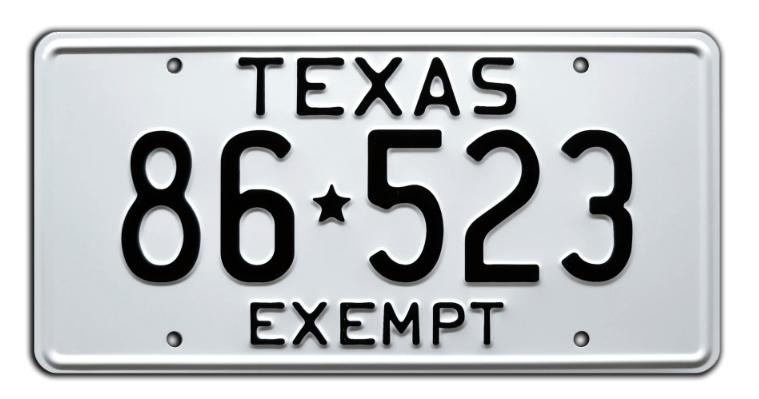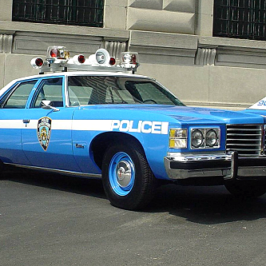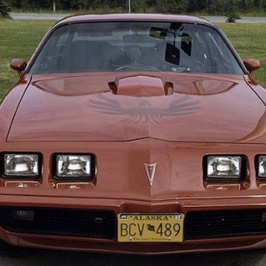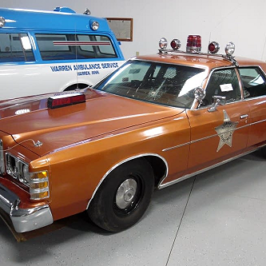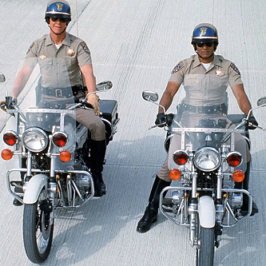When the movie ‘Smokey and The Bandit’ was released in 1977 it was a huge hit. With a budget of $4.3 million, the film eventually grossed $126,737,428 in North America, making it the second highest grossing movie of 1977 (only Star Wars earned more, with $221.3 million). The worldwide gross is estimated at over $300 million.
The vehicle star of the movie may have been Bandit’s (Burt Reynolds) 1977 Pontiac Trans Am, but the 1977 Pontiac LeMans of Sheriff Buford T. Justice (Jackie Gleason) was just as much a star of the movie. I guess you could think of it as a ‘co-star’ or ‘leading lady’ to the Trans Am.
When Hal Needham (writer & director) contacted Pontiac to get the Trans Ams, they agreed to give him (3) Pontiac Trans Ams and (2) Pontiac Lemans. Those cars were pretty much trashed by the end of filming. But since then, a few enthusiasts have recreated Buford Justice’s Pontiac LeMans for shows and the annual Bandit Run.
1977 Pontiac LeMans Freeway Enforcer:
In 1976 and 1977, the Pontiac Lemans was offered to law enforcement agencies as a ‘Police Patrol’ (light duty) and ‘Freeway Enforcer’ (heavy duty) police package.
- The ‘Police Patrol’ package was available with the Pontiac 301 V8 (2bbl carb) and Pontiac 350 (4bbl carb).
- The ‘Freeway Enforcer’ was available with the Pontiac 400 (4bbl carb)
- The ‘Police Patrol’ package used 440 lb-in front and 140 lb-in rear springs, but the Freeway Enforcer’ used 550 lb-in front springs, 300 lb-in rear springs.
- Both packages used 1.125″ front and 1.00″ rear sway bars, 80-amp alternators, and an upgraded cooling system
Coors Beer Not Sold East of The Mississippi:
Part of the reason Coors was only found within a limited geographic area involved the way it was made. Coors was cold filtered, not pasteurized, and needed to remain refrigerated once packaged. This made transportation and storage difficult.
Refrigerated trucks were limited in how long they could keep Coors cold, and store owners were required to remove a case of Coors from its shelves if it sat there for more than 30 days.
A 1974 Time magazine article explains that Coors was so coveted for its lack of stabilizers and preservatives, and Coors Banquet Beer had a brief renaissance. Future President Gerald Ford, after a trip to Colorado, hid it in his luggage to take it back to Washington, D.C. President Dwight D. Eisenhower had a steady supply airlifted by the Air Force to Washington. Carl Yastrzemski of the Boston Red Sox would bring several cases after playing on the West Coast, by stashing them in the equipment trunks on the team’s plane.
Coors is still brewed just outside Denver, Colorado. It is now sold in all states as Coors ships it in refrigerated train cars and bottled locally and sold in different parts of the country including the eastern US states.
Truck Driver Frederick Amon:
Truck driver Frederick Amon drove a route from Denver to North Carolina, which he used to his advantage by selling contraband cans of Coors along the way. Amon supposedly sold cans to restaurants and country clubs as he crossed the nation, usually for $1 per can. With a six-pack of Coors costing about $1.50 at the time, his markup was impressive and would have made Coors today as pricey as any trendy single-sold microbrew ($1 in 1973 dollars = $5.80 in 2018 dollars).
Inspiration For the Movie:
While working on the 1976 film ‘Gator’ in Georgia, Hal Needham discovered that someone was stealing cans of his Coors beer that the film crews’ driver captain had brought from Los Angeles. Hal set a trap and caught the maid stealing the beer. When he confronted her, she told him that you can’t get Coors beer around here. From that the movie plot of going to Texas and bootlegging Coors beer back to Georgia was born.
Jackie Gleason:
Question: How did Hal Needham get Jackie Gleason to be in the movie?
Hal Needham: Well, I had a lot to do with that. I said, “What about Gleason?” and the studio said, “Well, Gleason, we don’t have enough money for Gleason.” So, I sent him the script anyway. I did two Smokey and the Bandit movies with Gleason, and he never knew my name. It was either Pally or Mr. Director. It was Pally when everything was good, Mr. Director when he was a little pissed. So, he calls me up and says “Mr. Director, what makes you think that I would do this movie?” and I said, “Well, Mr. Gleason, I’m a big fan of yours and I’ve seen every Honey Mooners episode ever made and many of your other shows and movies. I wrote this script and I’m directing the movie, so nothing is etched in stone. If you play the part, I can see that character being very, very funny. He said, “I’ll do it.” Of course, we had to do a little negotiating on the paycheck and things like that, but that was how it happened.
Question: Did Jackie Gleason ad-lib his lines?
Hal Needham: With Gleason, I’d say 75 percent of what he said was his own. I mean, he just came up with some of the funniest damn stuff and it was wonderful. Who am I to tell the master what’s good and what’s bad, you know? Most of his dialog came right out of his head. You know things like, “There’s no way you could come from my loins,” and “The first thing I’m gonna do when I get home is punch your mama in the mouth.” He called his son a “tick turd,” really, a “tick turd.” He had all kinds of funny stuff.
Question: Where did the name ‘Buford T. Justice’ come from?
Answer: “Buford T. Justice” was the name of a real Florida Highway Patrolman known to Reynolds’s father, who was once Police Chief of Riviera Beach, Florida. His father was also the inspiration for the word “sumbitch” used in the film, a variation of the phrase “son-of-a-bitch” that, according to Reynolds, he uttered quite often. Gleason was given free rein to ad-lib dialogue and make suggestions. It was his idea to have Junior alongside him throughout the film. In particular, the scene where Sheriff Justice unknowingly encounters the Bandit in a roadside diner (a “choke and puke” in CB lingo) was not in the original story but was rather Gleason’s idea.
Montague County Sheriff:
While Sheriff Buford T. Justice states several times in the movie that he’s a Sheriff from Texarkana Texas, the emblem on the doors of his car clearly identifies the car as belonging to the Montague County Sheriff. There is actually a Montague County Sheriff’s Department in Texas, but it’s 222 miles due west of Texarkana. I’ve often wondered how they chose that name and whether someone connected to the movie had a connection to Montague County, Texas.
Links:
1976-1977 Pontiac LeMans Freeway Enforcer – Code 3 Garage
Montague County Sheriff’s office in Montague, Tx (montaguesheriff.com)
Videos:
Photo Gallery:
About The Author
Code 3 Garage
I started my career as a police officer in 1989 with the Geneva on The Lake Police Department. I worked part time as a police officer and full time as a Security Sergeant doing armed mobile security patrols for a local security company. In 1990 I became a State Trooper with the Ohio State Highway Patrol. During my career as a State Trooper I was certified as a Technical Crash Investigator, OPOTA Police Instructor, OPOTA Police Driving Instructor, LASER Instructor, and received awards for ACE (Auto Larceny) and Post Trooper of The Year. Code 3 Garage is a mix of my inner automotive gearhead, and public safety background. I hope you enjoy it!

